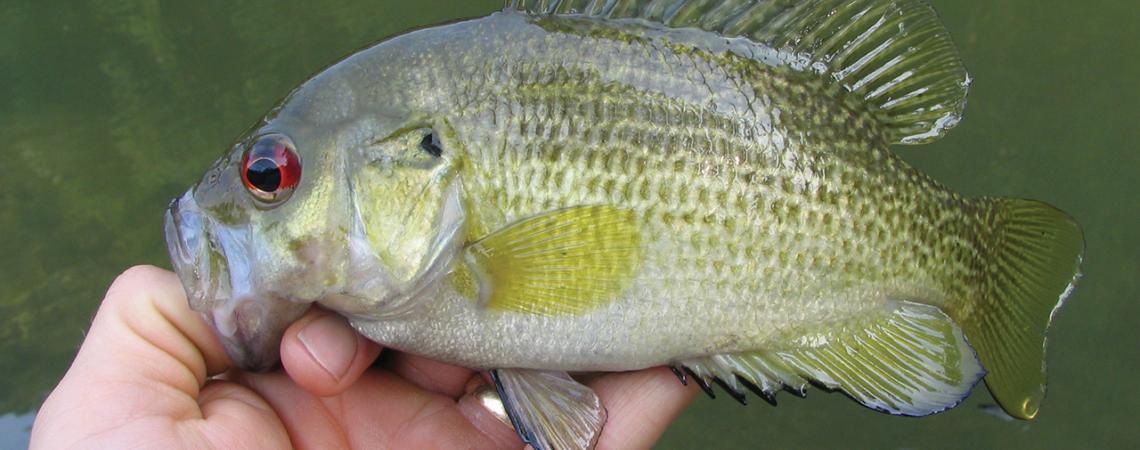The smallmouth bass has claimed a worthy space in Ohio lore.
Ohio is one of only three states that does not recognize a state fish, but if ever our lawmakers should decide to name one, there’s but a short list of great candidates: the yellow perch, for example, or the Ohio Muskie. A particularly strong case, however, could be made for the smallmouth bass — the gamest fish that swims.
Ask any angler who’s pulled one from the purple waters of a pool in a stream that purls past a barn on a rural route or heaved one up to a boat in western Lake Erie. In either case, imagine picking up a sack of potatoes and hoisting it into a shopping cart — but it resists. That’s what the taut tug of a smallmouth bass feels like on the end of your line.
The little greenish-bronze fish swims in every county throughout the state. From Lake Erie to the Ohio River and many brooks and bigger streams in between, the fish can be found to the delight of any angler willing to walk along the edge of a creek.
Gaining fame
The smallmouth bass — one of 14 species of the larger genus of black basses — is a pugnacious packet wrapped in scales, and was, at one time, the most celebrated game fish in the U.S., thanks in part to Ohioan James Henshall, a doctor who treated Union troops in the Civil War. Henshall was the type of old-school medical doctor-naturalist that commonly existed in his day, but the man of medicine was, it seems, more interested in the study of fish than in doctoring. Henshall served first as secretary, and then later as president, of the Ohio Fish Commission (a precursor to what is now the Department of Natural Resources) from 1886 to 1892.
Poetry in motion
He is perhaps best known for penning the Book of the Black Bass, published in Cincinnati in 1881 and still in print. Therein he wrote, “The black bass is eminently an American fish; he has the arrowy rush and vigor of the trout, the untiring strength and bold leap of the salmon, while he has a system of fighting tactics peculiarly his own. I consider him, inch for inch and pound for pound, the gamest fish that swims.”
Henshall felt the “arrowy rush” of a smallmouth bass for the first time on Independence Day 1855. According to his autobiography, he and a friend traveled by train from Cincinnati with rods, seine, and a minnow bucket to Morrow, Ohio, to fish the Little Miami River. “The line went racing through the water, cutting erratic angles and curves in a way I had never seen before: out leaped a wriggling form of greenish bronze that seemed to hurl a defiant challenge with a graceful curve.”
A sight to behold
About the time that Ohio’s hillsides are spangled white from flowering dogwood tree blossoms in late May, male smallmouth bass set about building a nest.
Male fish move into the shallows along the creek edges and build a 3-foot-wide circular nest under the cover of overhanging bony branches of boxelder trees or near the root masses of pallid and barkless streamside sycamores that have grown fat with age. They favor nesting near large stones or stumps that slow water flow.
There he coaxes females — who may carry a remarkable 30,000 eggs —to his constructed abode to spawn. The males own an uncommon paternal instinct and vigilantly guard the eggs while oxygen-rich water percolates through them for a couple of weeks. When they hatch, the miniature models of the parents, entirely black, hover in the nest while the dad faithfully stands guard.
Where to find ’em
By the first of July, father and young have dispersed and headed to shelter of deeper waters. The best smallmouth bass streams have meanders and bends with visible flow, trees along the edges, deep pools, and rocky bottoms of rubble and bedrock. As far as flat water goes, they don’t take to farm ponds, but thrive over the limestone reefs in Lake Erie. Of course, the Bass Islands north of Sandusky have their names for good reason. You’ll never have to wander far, though; smallmouth bass are found in every county in the state.
Craig Springer is co-author of Freshwater Fishes of Ohio, available on Amazon.









